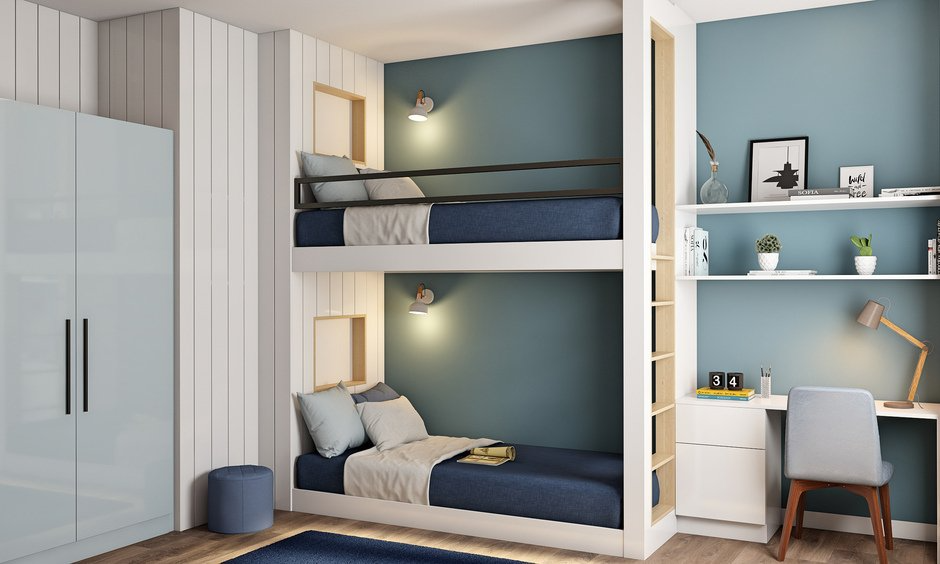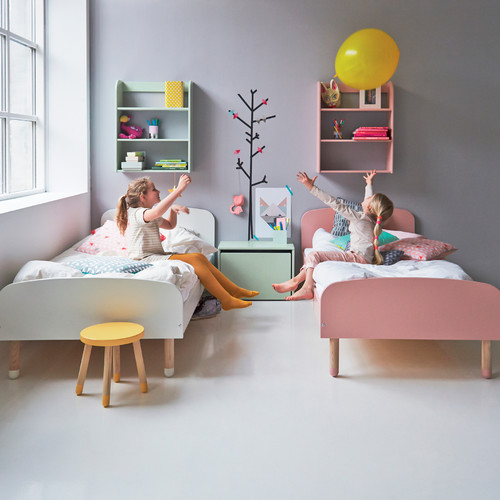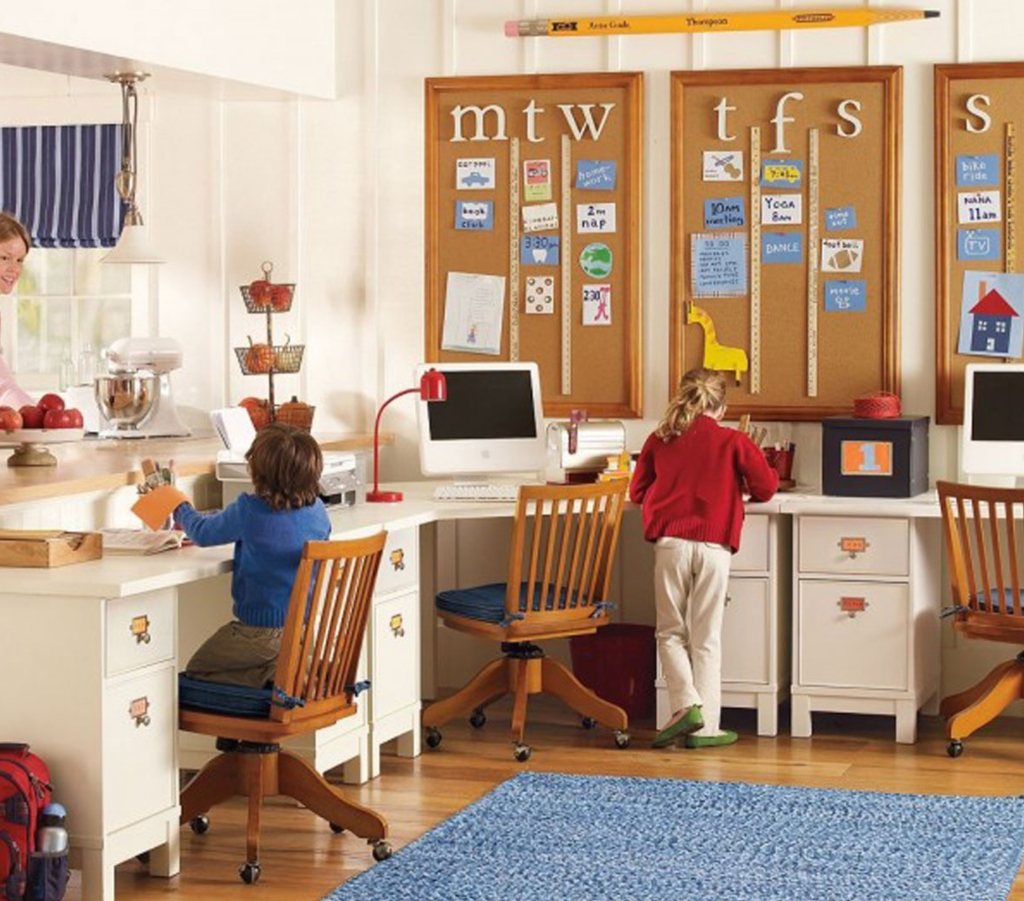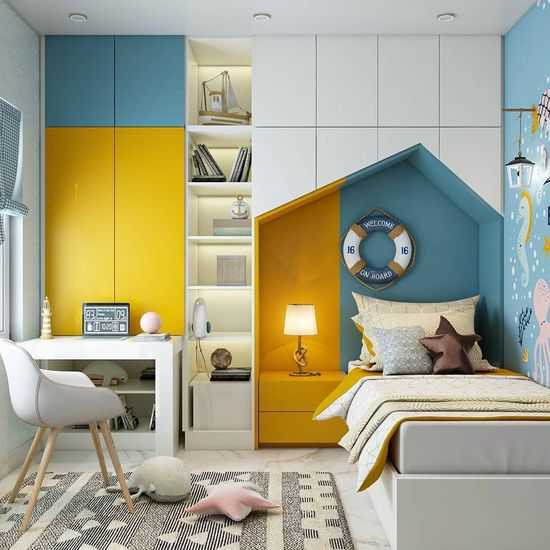How to Design Kids' Rooms for Two Effectively
Designing a bedroom for two kids can be an exciting yet challenging task. Balancing functionality, aesthetics, and individuality while optimizing space requires thoughtful planning. Whether you’re designing a shared bedroom for siblings or creating a multi-functional space, this guide will help you navigate the process with practical tips and creative ideas. Let’s explore how to master two kids’ bedroom design effectively.
1. Understand Their Needs and Preferences
The first step is understanding the needs, preferences, and personalities of both children. Consider their:
Age and developmental stages.
Hobbies and interests.
Space requirements for study, play, and relaxation.
Example:
For younger kids, prioritize playful and colorful elements. For teenagers, opt for a more sophisticated look with distinct areas for study and leisure.
2. Choose the Right Layout

The layout is crucial when designing a shared bedroom. Choose a layout that maximizes space and provides each child with their own designated area.
Layout Ideas:
Bunk Beds: Perfect for small rooms, bunk beds free up floor space for play or study zones.
Twin Beds: Place two beds parallel or in an L-shape to maintain symmetry and balance.
Loft Beds: Ideal for creating vertical space, loft beds can incorporate desks, storage, or play areas underneath.
Tip:
Position furniture to allow easy movement and ensure that both children have equal access to shared spaces like wardrobes and desks.
3. Create Individual Zones

While the room is shared, it’s essential to give each child a sense of ownership. Personalize their individual spaces with:
Unique bedding and pillows.
Dedicated storage solutions for their belongings.
Small pinboards or shelves to display their favorite items.
Example:
Use color coding to define zones. For instance, one child’s side could feature blue tones, while the other’s has green accents.
4. Prioritize Smart Storage Solutions

Shared bedrooms often require creative storage solutions to keep clutter at bay. Invest in multifunctional furniture to make the most of the available space.
Storage Ideas:
Under-bed drawers for toys, clothes, or seasonal items.
Wall-mounted shelves to display books or decorative items.
Storage ottomans that double as seating.
Pro Tip:
Label storage bins or drawers with each child’s name to encourage organization and avoid mix-ups.
5. Design a Study Area

Incorporate a dedicated study zone to promote focus and learning. Choose a desk with ample storage and ergonomic chairs for comfort.
Shared vs. Individual Study Spaces:
Shared Desk: Use a long desk with separate chairs and storage on either side.
Individual Desks: If space permits, provide separate desks to prevent distractions.
Example:
Add task lighting, such as adjustable desk lamps, to enhance functionality and minimize eye strain.
6. Incorporate Playful Elements

Kids’ rooms should be fun and inspiring. Incorporate playful elements that spark creativity and imagination:
A chalkboard wall or magnetic board for artistic expression.
A cozy reading nook with beanbags and shelves.
Hanging swings or indoor tents for playtime.
Tip:
Ensure playful elements are age-appropriate and can adapt as the kids grow.
7. Use Neutral and Adaptable Decor

Choose a neutral base for the room to ensure longevity. Add pops of color and character through easily replaceable items like rugs, curtains, and wall art.
Example:
Use removable wallpaper or wall decals to add personality without long-term commitment. These can be updated as the children’s tastes change.
8. Ensure Safety and Comfort
When designing a shared kids’ room, prioritize safety and comfort:
Use rounded furniture to prevent injuries.
Secure heavy furniture like wardrobes to the wall.
Opt for hypoallergenic fabrics and materials.
Example:
Install nightlights or soft lighting to create a soothing atmosphere for bedtime.
9. Plan for Growth
Kids grow quickly, so design the room to adapt to their changing needs. Opt for furniture and decor that can evolve with time.
Growth-Friendly Ideas:
Adjustable desks and chairs.
Beds with extendable frames.
Modular storage units that can be rearranged.
Tip:
Choose timeless designs and avoid overly themed decor that might feel outdated in a few years.
Final Thoughts
Designing a bedroom for two kids doesn’t have to be overwhelming. With thoughtful planning, creative two kids’ bedroom design ideas, and a focus on functionality, you can create a harmonious and stylish space that both children will love. Remember to involve the kids in the design process to ensure the room reflects their personalities and fosters their growth.